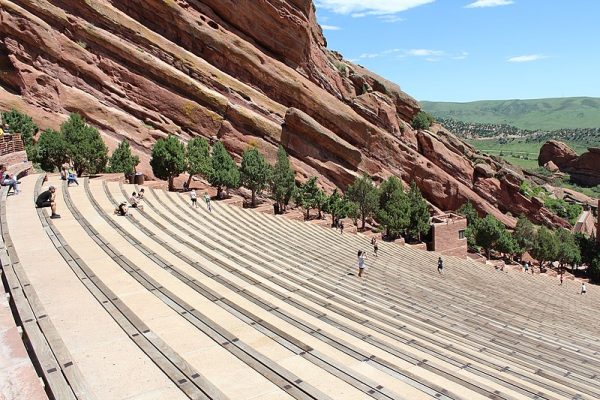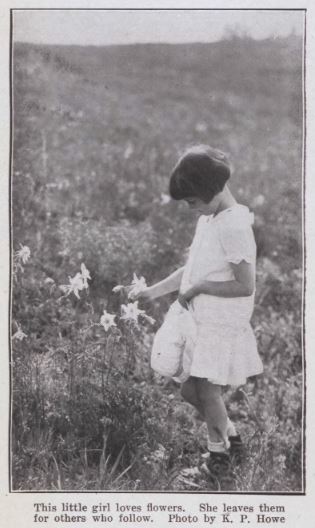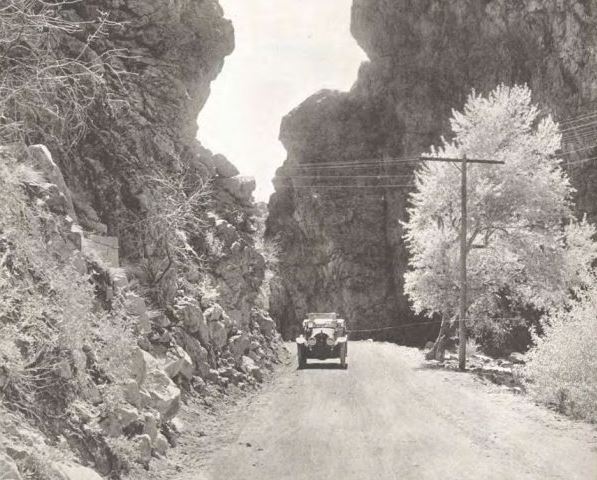Trick question: how can you be in Denver and in the mountains at the same time? You can, because forty-six mountain parks — places like Red Rocks, Lookout Mountain, Genesee, Chief Hosa, and Evergreen Lake — are Denver Mountain Parks. This means that, although outside of Denver city limits, these parks are owned and managed by the City and County of Denver. The system includes twenty-two accessible park sites and twenty-four conservation areas, covering 14,000 total acres.

The idea for Denver Mountain Parks first came about in 1910. John Brisben Walker, an entrepreneur, promoter, and landowner in the foothills west of Denver, brought the idea to Mayor Robert W. Speer. Speer was known for his efforts to beautify Denver. He oversaw the planting of thousands of trees, traveled to Europe to get ideas for Denver buildings and landscapes, and established Civic Center Park. At first, however, the “City Beautiful Mayor” was reluctant to spend funds on land outside of city limits. Walker and his allies at The Denver Post prevailed, however. In 1911, the Colorado General Assembly passed a resolution calling for the establishment of a Denver mountain park system, and in 1912 Denver voters approved a mill levy to fund the parks.
Frederick Law Olmsted, Jr., son of the designer of Central Park, was brought in to draw up plans for the Mountain Parks. They were an immediate success. More and more people were buying automobiles, which they used for tourism and recreation. In the three summer months of 1917, an estimated 300,000 people visited the Denver Mountain Parks, according to historian Wilbur Fisk Stone. This number, if it is accurate, is astounding considering the nation’s thirteen National Parks had a combined visitation of 453,498 during the whole year.*

That same year, the State Historical and Natural History Society published The Flora of the Denver Mountain Parks, a small booklet that has recently been digitized by our library. The pocket-sized guide not only helped visitors identify the trees and wildflowers they saw in the parks, but also educated visitors about how to preserve them — to stay on established trails, not pick the flowers, etc.
Over the years, the Denver Mountain Parks continued to develop. In the 1930s, the Civilian Conservation Corps worked on a variety of improvement projects in the park. Red Rocks Amphitheatre was opened in 1941. Then, in 1955, the administration of the Mountain Parks was moved to Denver Parks and Recreation, meaning that its funding came from the same source as funding for parks within city limits. Over the next few decades the Mountain Parks, now in competition with the other parks, started to decline for lack of funds. But “[p]ark managers coped with the hard times creatively, establishing regional partnerships and seeking grants to supplement limited operating funds,” according to the Colorado Encyclopedia. During the Great Recession in 2011, American Recovery and Reinvestment Act funds were used to assist with forest restoration. Preservation of the parks’ history and architecture has also been a priority. In the 1990s, many of the park sites were added to the National Register of Historic Places. Red Rocks is also a Denver Landmark and in 2015 was declared a National Historic Landmark. The Lariat Loop Scenic & Historic Byway also features several of the parks.
To learn more about the history of the Denver Mountain Parks, see articles in the January 1932 issue of Colorado Magazine and the July/August 2013 issue of Colorado Heritage, as well as the chapter “A Gateway into the Mountains” in the book Denver Inside and Out, available for checkout from our library. In addition, the Colorado Department of Highways’ promotional magazine, Colorado Highways Bulletin, featured the Denver Mountain Parks in its September 1918 issue.

* Source: https://www.nps.gov/aboutus/visitation-numbers.htm and Stone, Wilbur Fisk. History of Colorado Illustrated, Volume 1. Chicago: S.J. Clarke, 1918. Although Stone doesn’t mention it, the high number of Denver Mountain Park visitors in 1917 may be attributable to the burial of Buffalo Bill on Lookout Mountain on June 3, 1917.
- How to Spot the Differences Between Eagles and Hawks - August 16, 2021
- How Transportation Projects Help Tell the Story of Colorado’s Past - August 9, 2021
- Time Machine Tuesday: The Night the Castlewood Canyon Dam Gave Way - August 3, 2021